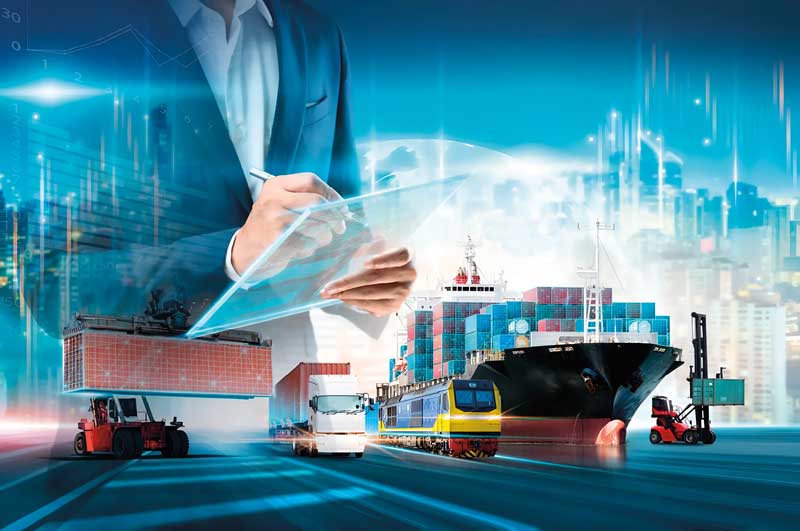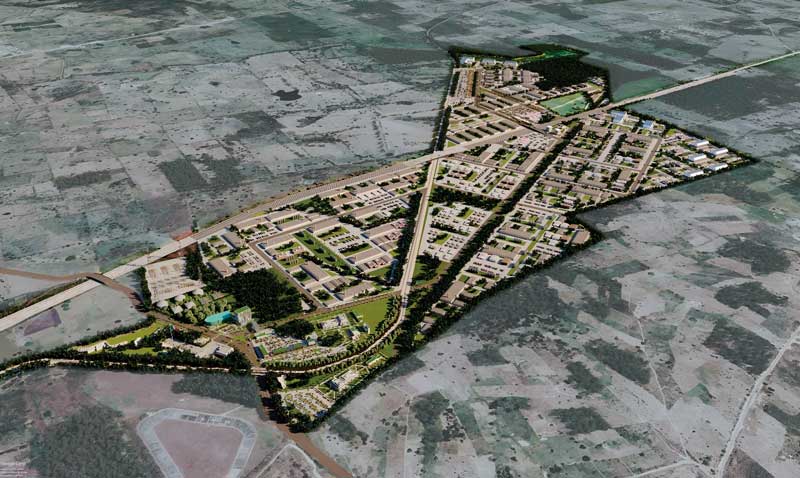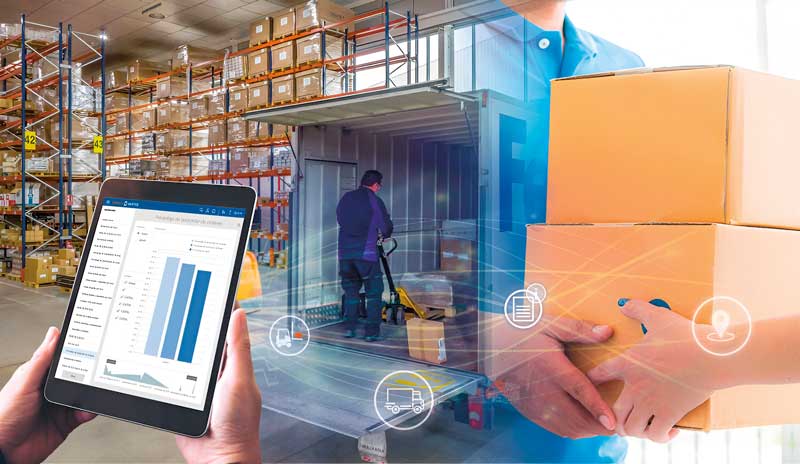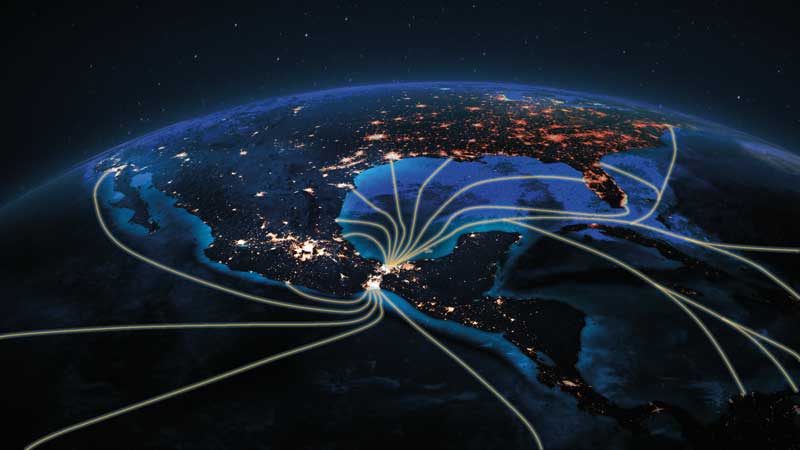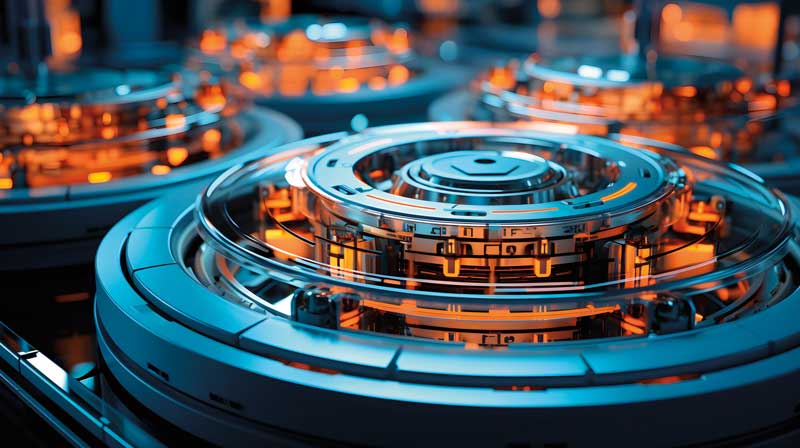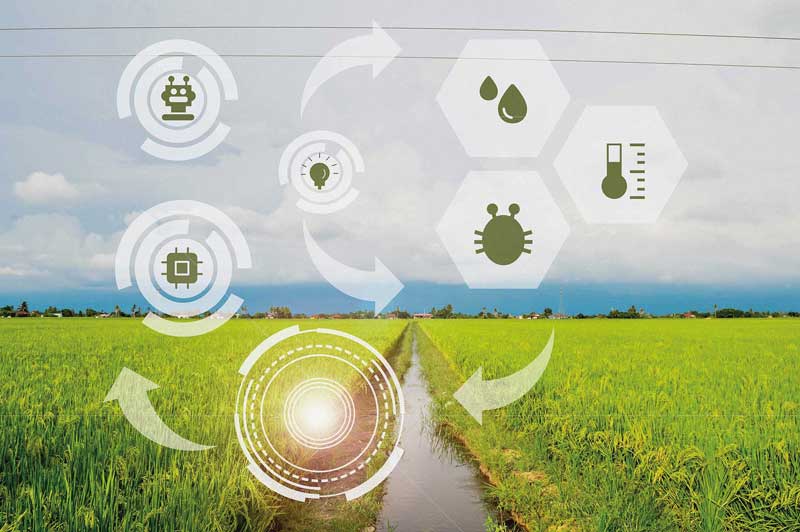Gisselle Morán (GM): What is your vision of Mexico in the global context?
Javier Aguilera (JA): As a new player. With all the conditions seen in the world, logistics routes for goods have been reconsidered, and this is where Mexico plays a major role; undoubtedly, it will develop great things economically in the future, and it all has to do with social development.
GM: What do you consider to be Mexico's strengths?
JA: Firstly, I believe in the solidity with which Mexico has always presented itself to the world, this great commercial relationship, the major treaties that have been consolidated over the years, and today, the vision of consolidating a truly important project like the Interoceanic Corridor, where we see projects being executed to launch this logistics platform. I see great potential for Mexico's development through this Interoceanic Corridor. The problem we see today with Panama, which does not help much with commercial routes, has greatly complicated international logistics. Mexico has all these facilities and now has a functioning train, as well as the conditions to promptly implement any infrastructure project in the Isthmus.
GM: What attracts you the most about the Interoceanic Corridor of the Isthmus of Tehuantepec?
JA: It has many tremendously important aspects. Primarily, being able to develop one of the areas that has been neglected, forgotten, for many years. It is important to be able to develop it because its conditions are so fabulous and spectacular; however, we could count on one hand, and we would still have fingers left, to see how many times these conditions have been created in Mexico's history, and today they are set to move forward with this great communication channel where the first major beneficiaries are the neighbors of the region.
GM: Platícanos ¿cómo están estructurados los Polos de Desarrollo para el Bienestar?
JA: A lo largo del Corredor Interocánico, el Gobierno destinó predios denominados Podebis. Considero como una de las grandes ventajas su ubicación y conectividad. Están comunicados por el tren que ya está funcionando, conectando Salina Cruz y Coatzacoalcos, y que puede a lo largo de esta conexión de 303 km transportar mercancías, lo que nos pone en una posición altamente competitiva.
GM: Tell us, how are the Wellbeing Development Poles structured?
JA: Along the Interoceanic Corridor, the government allocated plots of land called Podebis. I consider one of the great advantages to be their location and connectivity. They are connected by the train that is already operating, linking Salina Cruz and Coatzacoalcos, and can transport goods along this 303 km connection, putting us in a highly competitive position.
GM: What would be the benefits and how would each of the Podebis operate?
JA: I understand that the benefits are the same for all. In the Texistepec Podebis, in Veracruz, we have an excellent location, 45 km from the Port of Coatzacoalcos, an hour from Minatitlán airport; we have a large territorial extension: over 450 hectares, where undoubtedly it can be a great logistic development pole that serves and supplies the other poles, which are smaller in size. I see the potential for tax benefits in the early years to help attract large investments; I think there are many advantages. It's amazing how we have received feedback from major investors, from big players in the world who are setting their sights on the country, but not on the usual Mexico, those major investments that go to the Bajío or the North. Now, these major investments are turning to Mexico with great potential for enormous logistic growth in the Isthmus of Tehuantepec. That was unthinkable before. Today, the eyes of the world are on the Isthmus.
GM: We know that there are major investment projects from you and others in other Podebis, for example in clean energy.
JA: One of the neighbors is bringing in a $10 billion investment in development to produce green hydrogen in one of the Development Poles, and this speaks to the cyclotron, this particle accelerator which is a fascinating topic. It has already been demonstrated in the world that the few countries that invest in cyclotrons have had a takeoff compared to other countries that were competing in similarity and do not have it. This investment allows us to discover and create great patents that generate great value for the nation, it also allows large pharmaceutical industries to approach this great laboratory to obtain information and continue developing products. It is one of the projects that we are pushing with great strength, we have had a lot of approach with the Paul Scherrer Institute in Switzerland. In Brazil they have a cyclotron and there is a before and after since they have it. We are looking for a way to definitely obtain investments through the knowledge that companies, institutes, and governments that already have this particle accelerator, grant us or concession their knowledge so as not to start from scratch with the cyclotron, but to start with what is known and create these great developments, because it would undoubtedly be a great attraction for laboratories, research and technology companies.
GM: What do you think investors like about Mexico?
JA: Mexico itself is appealing. It's passion, talent, it's this culture of always having a good product. What do investors like about Mexico? There's stability, large investments, a record of foreign direct investment, large companies working in Mexico and delivering results in other countries. The momentum that the government has to support these new areas, the way the government has been trying to understand how the world is evolving in industry, business, investments. As the government said, 'I'm on board'. We have these investments, it has understood it, it has modeled it very quickly and with a very important capacity for adaptation. I think entrepreneurs have seen, have recognized this from the government and that's why the Interoceanic Corridor has been so successful.
GM: What do you think of the management and strength of the President to drive this project?
JA: Incredible, apart from the President's ability to attract investment and what he has achieved with a very important business sector, to demonstrate that Mexico is ready to receive that investment and that the conditions exist to do so. I think the President has played spectacularly, and doing this with the Navy has been strategic, because it has truly been a great executor, we have seen it with results. They are great companions, they go hand in hand with you solving every step to make this a reality.
GM: This is a project in which everyone agrees: the Federal, state, and municipal governments, the businessmen...
JA: That's one of the great certainties that investors have. This project is so important that it doesn't matter the government, it doesn't matter the color, it doesn't matter the businessmen. Development is imminent, job creation, welfare, the income it will generate in the region, and what it represents to be able to efficiently connect with the eastern United States; being able to transform goods with some tax exemptions, with all the Treaties that Mexico already has internationally. All these advantages that definitely have to be taken advantage of, that is very important for us.
GM: Do you consider the Interoceanic Corridor of the Isthmus of Tehuantepec to be a unique opportunity?
JA: Yes, and if not unique, it will take hundreds of years to develop something as historic as this. Yes, it's a unique opportunity, I say a lot: 'we get on the train', it's already moving, it's already advancing. We are very much on top of the train.
GM: Tell me a little about Texistepec, how big is it, what will it contain?
JA: Texistepec is a small municipality, mainly dedicated to agriculture, which we want to transform and add value to. The development potential is enormous, with 450 hectares of land. The train tracks run through it, and the highway divides it transversally. It's a perfectly located property with excellent connectivity. We have reached out, conducted interviews to inform people about the development because we want to grow with the community. We don't conceive it as an industrial park in any other way. People are excited; they tell us, "My child will be able to work here." They won't have to leave; opportunities will be here. Initially, we have worked to form these alliances because we understand that we can't have a highly technified industrial park if the workforce and the people's knowledge are not sufficient. They are there; we have great minds. Veracruz has a great vocation; we will create the conditions for the people of the region to occupy the best positions within this development.
We are very happy; we are working tirelessly with passion. We understood from the beginning what a Podebis is, a Development Pole for Wellbeing. They are not called industrial parks or free zones; they are called Development Poles for Wellbeing, and that is the secret. This will be a boom, a spark. We will see it when people start to feel it and say, 'this works.' It will be a snowball that no one can stop, not poorly organized companies, not poorly organized government; no one will be able to stop this. That's the beauty of the growth it will have; it has to grow in Texistepec and in all the locations where the Development Poles of the Interoceanic Corridor are located.
GM: When will the inauguration be?
JA: On February 28th, we laid the first stone of this great project in Texistepec. The Development Poles started immediately because the concessions were only delivered in December 2023, and by February 28th, the first stone was already laid, which includes a quite interesting investment, approximately 2 billion pesos, to create the minimum investment conditions so that companies can see with good eyes how we are developing this infrastructure, which will be at their service.
GM: What do the minimum investment conditions consist of?
JA: We are creating access roads, bringing water closer, installing electricity, creating platforms, embankments to create warehouse spaces and industrial buildings. A large percentage, 80% of that money, goes towards organization.
GM: What comes after those two years?
JA: At the same time, we are working on the trans-exponential aspect, tackling several fronts. In these two years, we are executing this resource, but at the same time, we are reaching out to investors, to companies to seek an ecosystem that adapts to the development needs to receive all these investments, and the truth is that we have had excellent participation. We have met with countless interested entrepreneurs, and that pleases us greatly because, as we discussed, the Interoceanic Corridor project has a presence throughout the country, and it is very interesting, it makes sense, it has certainty, and thousands of companies are looking to invest in the corridor.
GM: And what would be the vocations in Texistepec?
JA: I believe the vocations are industrial and technological. We have high specialization in information, in the transformation into Data Centers. We need to create innovative industrial parks, new agro-industrial parks, the latter of which will be immediate due to being what is developed in the region; people have the experience.
GM: This project becomes the Mexican dream; there's no need to go to the United States anymore.
JA: Yes, what happens is that it continues to be a watershed moment. I see a new form of growth and development in the Isthmus that did not exist, that was not visualized no matter how much it was desired. Because the Interoceanic Corridor has existed for hundreds of years, but today it is a reality; I see it as a new economic strip, a platform to drive everything that will come in the medium and long term with the growth of the southeast of the country.
GM: And the big difference is the value generation of the Corridor; 100 years ago it would have been just a passage, and obviously there's much more to it than that.
JA: Of course, today's dynamics, the way of doing business hand in hand with people, with social welfare; we're not reinventing the wheel: these are very proven things, but they are definitely what we want to start with. Yes, we want to discover new things, of greater benefit, of structure in greater well-being.
GM: Is the CIIT competing with Panama?
JA: No, the CIIT is not competing with Panama. I don't see it that way. The Interoceanic Corridor will be dedicated to transforming goods, adding value to goods, combined with all the international treaties that Mexico has, plus the fiscal benefits that the Polo has, and the location. It's the sum of all efforts that makes the Corridor successful.
GM: And with this moment of nearshoring, what opportunities do you see?
JA: Without a doubt, it's when people stop seeing the north of the country and the Bajío as the only places to make big investments and they will go to the Interoceanic Corridor; this area of the Isthmus of Tehuantepec has more conditions and more development opportunities today. It's worth betting on. Nearshoring comes to be a great complement, but it's not the main focus of the Interoceanic Corridor either.
GM: I see the complete transformation of products, the integration of transformed parts into final products that go to the United States and also cover the Mexican market.
GM: And within this transformation, what would continue on the agenda, what else do we need to keep doing?
JA: The government has to continue investing in infrastructure, in roads, insisting on security. The town of Texistepec, I consider, is one of the safest we have. We have a naval region within the Polo, we are well connected. We have never had any problems, I insist on the support we have had from the government, specifically the Secretariat of the Navy.
If you asked me, 'What would you ask for?' I would say that they continue to accompany us. They have been a facilitator without saying it, I have said that they are like our Single Window because every time we go to them, they facilitate everything for us, they open doors for us and together we find a solution to any problem. I would ask for that: to continue working hand in hand with the government and undoubtedly in the short term, in two or three years the Development Poles can be generating great investments with great immediate well-being.
GM: Is it a project from Mexico for the world and at the same time generates well-being for Mexicans?
JA: Definitely, we couldn't say it better. It is a project from Mexico for the world. The winner is Mexico, without a doubt.
GM: And regarding the ports, do you see any opportunity for further investment? What would they need to not fall short?
JA: They have received large investments. Today, the ports are ready to start receiving logistics infrastructure. A port like Salina Cruz that has a huge investment, a breakwater, which has a great depth naturally. I see Salina Cruz competing with Lázaro Cárdenas in a few years in the number of containers they move.
I see exits through Coatzacoalcos to the East Coast of the United States, millions of containers per year, transforming goods, adding value to them.
GM: Is the connectivity with the United States already in place or do we need to do something to achieve it?
JA: It is already in place, and ports like Miami, huge ports with million-dollar investments, operate at 30 or 40% of their capacity. I believe if we were to weigh the North American companies on the East Coast, it represents 80% of those interested in investing in this area because they don't even want to commercialize products with the United States, which needs the products that cross there, they want to keep them, meaning they say: 'hey, I'm interested in Coatzacoalcos, I'm interested in signing these agreements and doing business with Coatzacoalcos'. I think the ports have great growth potential.
GM: Everyone agrees with Mexico, it also benefits the United States, as well as the four borders.
JA: We have even had the opportunity to talk with people from the United States embassy, the ambassador himself has allowed us to open the door to talk with him and they are the ones who tell us: 'How good it is that this is being done, when do we start working together, how do we present ourselves to the Ministry of Economy, how do we start this connection'.
GM: Reflecting on what has been said about working hand in hand with the government, with the Navy, I believe that strengthens the project and gives certainty to investment, will we have security in all aspects?
JA: It's a reality. The Development Poles are in the hands of companies that have expertise in developing industrial parks, and the presented project has been approved. Being here hasn't been easy; it's been a series of research proposals aimed at adding value. There are great specialists working from different angles on the development of the Development Poles, and you can't imagine how impressive the progress has been. We've added value to the Development Poles, proposing improvements that we believe could benefit the businesses, and they tell us, "all of that is very good, but if you could add X, it would be even better." We discuss this with the government, work together, and make it happen. The idea is that everything has been very well structured; there are major projects, and there are significant figures strongly pushing forward the Interoceanic Corridor.
GM: It hasn't been easy, but is it from this administration that it starts, decisions are made, and it's achieved?
JA: It's with this administration that we break with how things used to be done. Everything is done, delivered quickly, and results are produced; if not, the next person takes over. We seek good and expedited solutions.
GM: Are you the ones who fulfill the most?
JA: It's the commitment, and that has allowed us to open doors with major investors who see us in a positive light, with certainty for their future investments.
GM: How did PROISTMO come about?
JA: We created a platform that brings together various companies and specialists to achieve the development of this unique industrial park, a space that should have economic development, but it's not just about making money, but also about social development. As this grows, so does the municipality and also intellect, because if our workforce becomes increasingly qualified, our companies will also become more specialized, allowing us to reach high-specialization sectors where great value products are found in the market.
GM: What differentiates this from the typical assembly plant, in terms of generating value?
JA: We aim for high specialization, great value in everything we produce. In the agro-industrial sector, I could tell you that it's one of the foundational elements of businesses, the base of the pyramid in the world. Strong companies from other countries have sought us out due to the great potential they see here, due to the care for water, and the energy generation in Veracruz. All these conditions that are not present in other parts of Mexico, which are limited or heavily regulated, here there are regulatory bodies, but there are better conditions because there is more abundance of resources.
GM: Has this been complemented with energy, which is very important for establishing operations?
JA: CFE has more than enough installed capacity in the region. I don't have the technical data, but if we need 50, CFE offers us 150. Energy is everything, it accounts for 60-70% of what we need. We have water for the industry; we have potable water channeled from a river. We have two wells at 200 m depth. We have all the facilities in the Development Pole; we are ready to receive investments.
GM: When can investments start coming in?
JA: They can start coming in right now. February 28 is a very clear example of how real action is being taken, money is being executed for the benefit of development so that these companies can start arriving. We have financial models, tailor-made solutions to accommodate companies. Today, we are already having approaches.
GM: Are you conducting national and international promotions?
JA: Yes. For example, the Hannover Industrial Fair in Germany is coming up, and we will attend with an agenda of 30 already interested companies. I insist, the Isthmus Corridor has been talked about for so many years that when you approach companies, they say, "I already knew about it. I've studied it."
GM: Tell us about the beginnings of PROISTMO.
JA: One of the core elements of what we are made of is a great vision, but a vision driven by love for Mexico. We may have many values and be integral, responsible, but the love we have for Mexico inherently brings great responsibility, commitment, and values. I believe that's what drives those of us who are part of PROISTMO, who are mostly a group of young Mexicans with different expertise in different areas. What I can tell you is that when you love something, you want the best for it. That's what we have in PROISTMO, how we have identified ourselves and joined with the people, with the communities; how we have listened to their needs.
GM: What does this project mean for Javier?
JA: It marks a before and after in my life. For the first time, I can make decisions and take actions that benefit and change the lives of more than one person. When I talk about changing lives, I'm referring to the construction workers who are working at the Development Hub, who are putting in effort every day. Their first hour of work is an English class. Why? Because we've seen that these people, who are our bricklayers today, could eventually become the maintenance staff in the area's companies. Knowing that we have that potential and that it's so easy to set this machinery in motion to help so many people, that's what motivates me every day. Because this project has to move forward so that people can see the benefits. That's my urgency, that people can see the benefits and say, "Yes, it worked, it's reaching us." If there are companies that need specialists, we will look for them in nearby municipalities to Texistepec - of which there are many - and Veracruz has a lot of talent, or in the neighboring states of Oaxaca and Puebla, but first we are looking for great profiles in the region and if not, we will expand our search because at the end of the day, Mexico is for Mexicans, so primarily we are looking for that local talent that usually migrates in search of an opportunity.
GM: How do you see this Corridor in ten years?
JA: Supercharged, with a fully consolidated logistics platform, where it won't matter if Panama becomes much more efficient, where it won't matter if Honduras opens its canal or strait, or Guatemala. I see it as a perfectly consolidated logistics platform, where we solve a social transportation issue with a passenger train that becomes a means of transportation for these industrial parks and a communication route where we can move large cargo volumes.
GM: How does it feel to have a Development Hub and be part of this whole project?
JA: It feels like a high responsibility, a lot of commitment. It's satisfying. I can't describe it, I can't convey it, but it's very important to be able to do something transformative.
Text:Gisselle Morán
Photo: mario ramirez / Real Estate Market & Lifestyle


